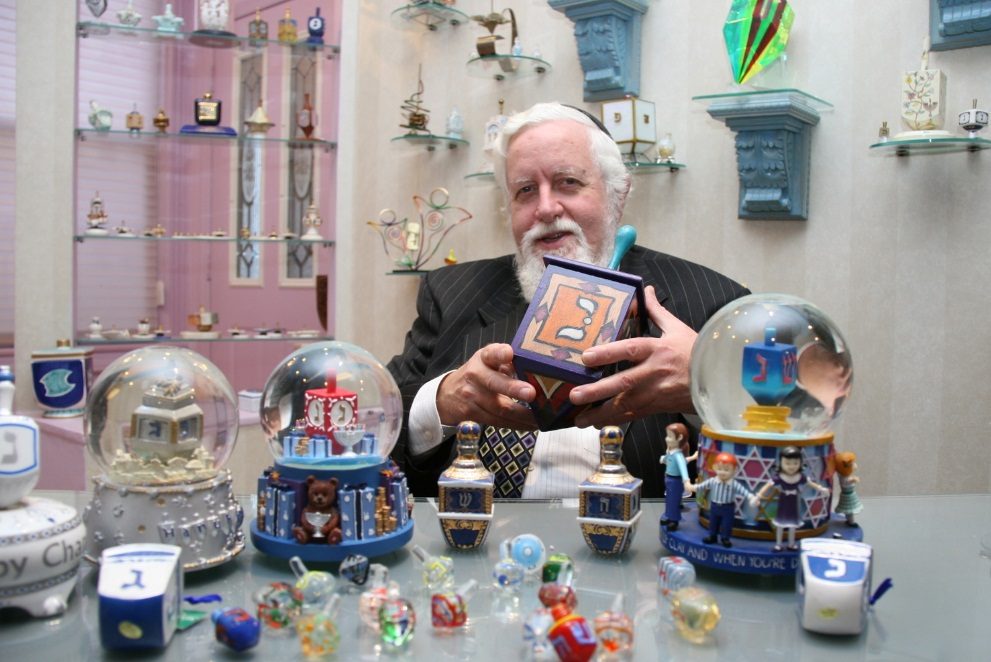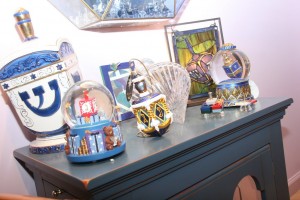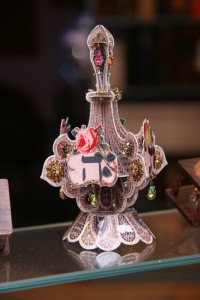…ve’al nisecha sh’bechol yom imanu…
…for all Your miracles we receive each day…
– from the Shemone Esrei
What does it take to experience a miracle? Nothing more than to live a life with eyes wide open. The truth is, we live in an age of miracles and wonder. Does that sound like a ridiculous statement to you – to characterize the age of the Internet, gene therapy, and biological science as an age of miracles? For many people, the idea of “miracles” comes straight from the Medieval Age. They view miracles as fantasy and “anti-science.”
Yet, I assure you that Judaism has the greatest regard for science. Science and miracles both true? Absolutely. As Tamar Sofer wrote in a recent blog, “My husband, a laser physicist, tells me that scientists who study particle physics are more likely to become religious. Scientists are notoriously hard to convince of anything. Yet, when these skeptical scientists see the perfect, natural order of the world, they decide nano and up, that this world was planned. The marvelous design before them becomes the miracle they need to become convinced.” Indeed, it is quite often those scientists who study natural law in its greatest complexity and detail who appreciate miracles the most.
The laws of science and nature guide our world. And miracles happen all the time. A contradiction? Not at all. The “rub”, as Hamlet might have suggested, is with how we define a “miracle”.
A miracle is anything that “should not” happen in the logical, rational normal course of events. A miracle need not be fantastical. If we limit the things that constitute “miracles” to the “earth standing still” or events that run contrary to physical law, then we not only tarnish the laws that God has established for the physical world but we blind ourselves to the very real miracles that play out in our lives everyday.
Over three hundred years ago King Louis XIV of France asked Pascal, the great philosopher of his day, to give him proof of the existence of miracles. Without hesitation, Pascal answered, “Why, the Jews, your Majesty. The Jews.”
History does not tell us the king’s reaction to this proof, but we do know exactly what Pascal meant by his answer because he explained it clearly in his masterwork, Pensees. In that work, he states that the fact that the Jewish people had survived even to his day was proof enough for him that miracles occur. After all, what rational explanation existed to make sense of our continued presence upon the world’s stage?
A more modern historian, Arnold Toynbee, wrote a ten-volume encyclopedia of human history. In the course of those many volumes the one thing that contradicted his “universal” rules that govern the inexorable decline of every people on earth was the continued flourishing of the Jewish people
Only the Jews.
Despite history’s the brutal attempts to destroy us, we have managed to defy all predictions and logical expectation of our demise.
Miraculous.
History is littered with the powerful empires that worked mightily to ensure our demise – from the Akkadians to the Babylonians to the Persians to the Third Reich. Jewish history – indeed, Jewish existence – defies rational explanation. We are a miracle.
The miraculous is so essential to who we are that David Ben Gurion, the first Prime Minister of the State of Israel, said, “A Jew who does not believe in miracles is not a realist.”
* * *
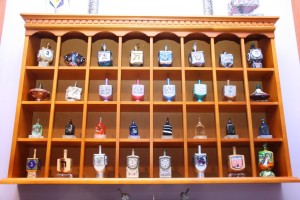 The most dramatic threats to our existence have come from external forces; the more subtle and damaging arise from within the Jewish community. Jews too often embrace cultural norms that would diminish the uniqueness of Jewish life, as when we clamored to assimilate into Hellenistic culture during the early years of the Hellenistic Empire. It was only the “miracle” of Chanukah – and by that I mean a good deal more than the oil lasting a full eight days – that once again allowed us to survive as a dedicated people.
The most dramatic threats to our existence have come from external forces; the more subtle and damaging arise from within the Jewish community. Jews too often embrace cultural norms that would diminish the uniqueness of Jewish life, as when we clamored to assimilate into Hellenistic culture during the early years of the Hellenistic Empire. It was only the “miracle” of Chanukah – and by that I mean a good deal more than the oil lasting a full eight days – that once again allowed us to survive as a dedicated people.
During the time of Antiochus, our prayer and repentance were not sincere. The people had assimilated. They were “as the Greeks” and so, in the beginning it was a mere handful of Hasmoneans leading the charge while most of our people failed to demonstrate the inspiration from below to earn God’s abundant blessing from above.
And yet God showered us with miracles. Despite the people’s lack of faith, He provided us, mercifully, with inspiration from above. His inspiration was undeserved – which made it all the more miraculous!
And so, the specific miracles arrived and we emerged victorious victors; we re-dedicated the grand Temple and lit a miraculously burning oil.
On Chanukah we spin dreidels upon which are inscribed the first letters of the words, “neis gadol ha’yah sham” – a great miracle happened there. (In Israel the letters on the dreidels spell out “neis gadol ha’yah po” – a great miracle happened here!) We rejoice with our dreidels, but we spin them specifically from their top part to constantly remind ourselves that Chanukah was a time when miracles came undeserved from God, when the Almighty bestowed His infinite compassion upon His people and things began to spin down to us in the form of undeniable miracles.
How surprising that the dreidel, silly top, should carry such weight – not only a theological truth and a statement about the role of the Jewish people in the miracle of Chanukah but also insight and knowledge into powerful historical dynamics. The Kabbalah, the compendium of Jewish mystical teachings, teaches us another aspect of the dreidel. In this understanding, the four letters do not represent a statement about God’s presence in the world – a great miracle happened there/here – but rather they each represent one of four different historical empires – Babylonian, Persian, Greek and Roman – that tried to destroy the Jewish people.
Four empires the likes of which the world had never seen. And the Jewish people? A relatively puny gathering of people dedicated to study and the performance of God’s command. Is it any wonder that, when given the opportunity, we seek to assimilate and become part of these “great” cultures and empires? But something always holds us back. Internally and externally, we are different. We are “like” but not the same.
So, against this backdrop of world history, are we simply spinning haphazardly from one tragedy to another? Or might there be some reason and meaning behind all the events that have punctuated our history?
Our miraculous victory at Hanukah teaches us little about military strategy and everything about ourselves and the world, but about God as well.
Without God, there are no miracles.
Which brings me to our modest little dreidel. In its modesty, it teaches us a great deal about God. Just as the dreidel spins around a central point and topples when it begins to lose its connection to that point, so too do we begin to “lose our footing” when we begin to lose our connection to our center, to God.
The dreidel teaches us about our own psychologies. We are only “whole” when all the aspects of our being – body, mind, soul… hakol – are balanced and blended. When the dreidel spins, who can distinguish between each of the individual sides? No one! As we spin in perfect balance, on our central point, we are balanced and whole.
When we face times of hardship and tragedy, the dreidel teaches us first and foremost that God is our God and we are His people. And if we believe in that ultimate meaning of the Jewish people; if we know that despite the dizzying blur of events in our history there is some purpose to the challenges we face, and if we are prepared to fight to remain Jews regardless of what history throws at us, then who knows – we might just experience a miracle and be reassured that there is a hidden hand guiding the destiny of the Jewish people.
And yet… and yet… this sense of miracle is so mighty as to cause us to overlook the small miracles, the delightful miracles, that occur each and every day. Which brings us, once again, to the simple and fun little dreidel.
Amy Twain blogs that, just like our little dreidel, miracles “…come in different and various sizes, some large and some small, but they are still miracles. Consequently, a miracle is not only some unexplained, supernatural circumstance. They could actually originate from you and me. Don’t you think that any miracle can happen when you decide to finally volunteer your time to the local library? Be kinder or nicer to your spouse? Give some money to the beggar and spend some more quality time with your beloved children? Visit an elderly and lonely neighbor? How about giving a warm smile to a stranger? A miracle can also occur whenever a person hears his call of her or his life, pays attention to and acts on it.”
My growing, personal collection of dreidels not only keeps my sense of wonder and delight fresh and young but is a constant reminder of the small miracles of life. Every day, I see God’s miracles – in a mother’s kiss, a grandmother’s doting smile, a father’s proud expression. I see a community caring for itself and for others.
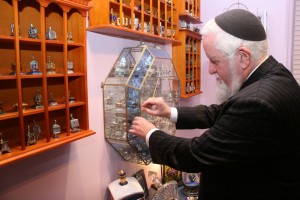 The world is filled with miracles great and small and, as Tamar Sofer suggests, “you do not have to be a particle physicist to see miracles.” Not at all. Miracles are part of the Jewish world and experience. From Sinai and the splitting of the Red Sea, miracles are part of our national history. Our “…national memory helps Jews believe in miracles, and develop a stronger relationship with God.”
The world is filled with miracles great and small and, as Tamar Sofer suggests, “you do not have to be a particle physicist to see miracles.” Not at all. Miracles are part of the Jewish world and experience. From Sinai and the splitting of the Red Sea, miracles are part of our national history. Our “…national memory helps Jews believe in miracles, and develop a stronger relationship with God.”
And so we spin, spin, spin delightfully in the world, aware of the miracles large and small which give our lives meaning, none greater than that God has reached out to us and made us His special people.
